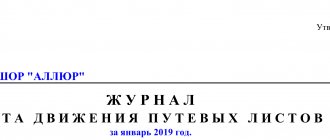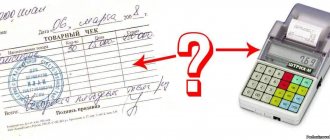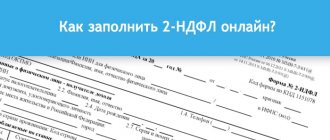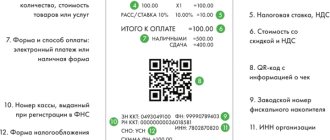December 15, 2020
Electronic waybill. Practice of application of the document and legislative norms
According to the roadmap for the creation of the state platform “Superservice 22”, new services for paperless road transport of goods will be launched in 2021-2024.
First in the pilot zone, then in all regions of the Russian Federation. One of the main priorities of the Ministry of Transport is the digitization of basic transport documents, waybills and transport/bill of lading. According to the forecast, this will remove a significant part of the burden on carriers associated with document flow and reduce costs. Experts regularly cover logistics industry news and changes in legislation.
New section - transportation information
The first important change was made to paragraph 1, which lists the required sections of any waybill:
1. The waybill must contain the following mandatory details: ... 6) information about transportation.
This paragraph states that from January 1, 2021, each waybill will have a new section “transportation information.” More detailed information on the contents of this section is provided in paragraph 6:
6. Transportation information includes information about types of messages and types of transportation.
That is, each waybill must contain information about:
- in the form of a message;
- type of transportation.
Let me remind you that each of these concepts is disclosed in the Charter of road transport and urban ground electric transport:
Article 4. Types of communication
1. Transportation of passengers, luggage, and cargo is carried out in urban, suburban, intercity, and international traffic. ... Article 5. Types of transportation of passengers and baggage
Transportation of passengers and baggage is divided into:
1) regular transportation;
2) transportation according to orders;
3) transportation by passenger taxis.
Thus, there are 4 options for message types:
- urban;
- suburban;
- intercity;
- international.
The legislation also provides for 3 options for the type of transportation:
- regular;
- by order;
- transportation by passenger taxi.
For example, for a regular bus operating within a populated area, the section should contain the following information: Type of service: urban. Type of transportation: regular.
For a truck that transports cargo between neighboring regions, the section will look like this: Type of message: intercity. Type of transportation: none.
Types of transportation apply only to the transportation of passengers and baggage and do not apply to the transportation of goods. Therefore, the second example uses the value "absent".
Changes to “1C: Public Institution Accounting 8” (rev. 2)
Let's consider the procedure for generating waybills and a journal for their registration in the program "1C: Accounting of a State Institution 8" edition 2, taking into account the changes made by Order No. 368.
Formation of waybills
“1C: Public Institution Accounting 8” edition 2 provides for the formation of waybills according to unified forms No. 3, 3 special, 4-P, 4-S, 6, 6 special, ESM-2, approved. Resolution of the State Statistics Committee of the Russian Federation dated November 28, 1997 No. 78, as well as in form No. 412-APK, approved. by order of the Ministry of Agriculture of Russia dated May 16, 2003 No. 750.
To comply with the requirements of Order No. 368, the following changes have been made to the printed forms of waybills generated in the program:
- added the Transportation Information field and filling it out according to the waybill document;
- added the ability to display information about the model of the vehicle and trailers.
To generate waybills according to the specified forms, you should use the commands for printing waybills with the postfix “(pr. No. 368 dated 09/11/2020)”, see fig. 1.
Rice. 1
Figure 2 shows an example of the new printed form “Passenger car waybill (pr. No. 368 dated 09/11/2020)”:
Rice. 2
Filling out the Transportation Information field of the printed form is carried out according to the details of the same name in the waybill document form.
For a vehicle, you can determine the default value by the type of waybill (fuels and lubricants - Settings - Settings for filling out fuel and lubricants accounting documents).
When selecting a vehicle, the value of the Transportation Information attribute will be filled in according to the filling setting for the type of primary document (type of waybill).
As noted above, transportation information now includes information about types of messages and types of transportation. According to the explanations of the authors of Order No. 368, when carrying out transportation for the organization’s own needs, the waybill is marked “for the organization’s own needs.”
If the settings for filling out documents for a vehicle do not specify the default value of the Transportation Information field, then the value of the corresponding attribute of the Waybill is filled in by default as For the organization’s own needs and can be changed by the user.
In order for the model of a vehicle or trailer to be reflected in the printed form of the waybill, it should be indicated in the corresponding element of the directory Fixed assets, intangible assets, legal acts (OS, intangible assets, legal acts - Fixed assets, intangible assets, legal acts). To do this, in the directory element form on the Inventory object tab, you must follow the link in the Vehicle Passport field and in the Model attribute of the Vehicle Passport form, specify the car model.
After filling in the information about the model, you should save the data changes by clicking the Save and close button.
As a result, in the printed form of the waybill, in addition to the brand, the vehicle model will be filled in. For trailers, the settings are carried out in a similar way.
Indication of the vehicle brand on the waybill
6. Vehicle details include:
1) the type of vehicle (passenger car, truck, bus, trolleybus, tram) and model of the vehicle, and if the truck is used with a car trailer, car semi-trailer, in addition - the model of the car trailer, car semi-trailer;
4. Vehicle details include:
1) the type of vehicle, make and model of the vehicle, and if the vehicle is used with a trailer (semi-trailer), in addition - the make and model of the trailer (semi-trailer);
Previously, mandatory details required only the model of the vehicle to be indicated; from January 1, 2021, in addition, the make of the vehicle must be indicated. In this case the change is minimal. This is due to the fact that a car model without a brand says little. Therefore, when filling out waybills, employees of most organizations indicated both the make and model.
So, according to this change in the waybill, you will only need to rename one of the points.
Where and when will the experiment take place?
The experiment will last one month - from October 1 to October 30, 2020.
The pilot project will unfold in six regions: the Republic of Tatarstan, Krasnodar Territory, Moscow, Moscow, Ryazan and Kaluga regions. The Ministry of Transport intends to attract the largest regional carriers to it. Participation in the pilot project is voluntary. During the experiment, companies will continue to issue paper transport documents simultaneously with electronic ones.
Fill out the waybill with all the necessary details in a special service
Indication of the inventory number for trolleybuses and trams
6. Information about the vehicle includes: ... 2) state registration plate of a passenger car, truck, cargo trailer, cargo semi-trailer, bus, trolleybus;
2) the state registration number of the vehicle, and if the vehicle is used with a trailer (semi-trailer), its registration number and/or inventory number (for trolleybuses and trams);
Previously, subparagraph 2 required that the registration number of the vehicle be indicated on the waybill. However, trolleybuses and trams do not have registration numbers. the inventory number of a trolleybus or tram into the waybill That is, the number that is indicated on board this vehicle.
When to draw up a waybill and how long it is valid
The validity period and time for issuing a waybill depends on the duration and number of flights. We have collected the information in a table.
| Registration time | Validity | |
| One or more flights during a shift within one day | Before the first flight | For a day |
| Flight exceeds shift duration | Before the flight starts | For a period corresponding to the duration of the flight or for a period corresponding to the number of calendar days to which a shift (working day) falls on more than one calendar day |
If during the validity period of the waybill a vehicle is used by several drivers in shifts, then several waybills can be issued for each driver for one car.
Information about technical control and on-line visits
6. Information about the vehicle includes: ... 4) date (day, month, year) and time (hours, minutes) of the vehicle leaving the parking lot and entering the parking lot;
5) date (day, month, year) and time (hours, minutes) of pre-trip or pre-shift monitoring of the technical condition of the vehicle (if its mandatory implementation is provided for by the legislation of the Russian Federation).
4) date (day, month, year) and time (hours, minutes) of pre-trip or pre-shift monitoring of the technical condition of the vehicle (if its mandatory implementation is provided for by the legislation of the Russian Federation);
5) date (day, month, year) and time (hours, minutes) of the release of the vehicle onto the line and its return.
Subclauses 4 and 5 contain two important changes:
- the points have changed places, that is, it makes sense to change their order in the waybill;
- Instead of leaving and returning to the parking lot, the terms are now used to leave the line and return from the line.
The changes that need to be made to the waybill form are discussed above. And then we will talk about how the procedure for issuing waybills has changed.
Who needs waybills and why?
Waybills are necessary for organizations to control the movement of vehicles, calculate wages for drivers, record fuel consumption, calculate depreciation on a vehicle, and account for total transport costs. In addition, if a driver in a company vehicle is stopped by a traffic police inspector to check his documents, this document confirms:
- validity of the flight;
- legality of transportation of cargo and passengers;
- good condition of the vehicle;
- the driver's right to drive the vehicle.
Article 12.3 of the Code of Administrative Offenses of the Russian Federation (Part 2) provides for a fine of 500 rubles for the absence of a waybill in the hands of the driver, when it is obligatory.
Preparation of waybills for each vehicle
9. A waybill is issued for each vehicle used by a legal entity or individual entrepreneur for the transportation of goods, passengers and luggage by road and urban ground electric transport in urban, suburban and intercity communications.
8. A waybill is issued for each vehicle operated by a legal entity and (or) individual entrepreneur.
There has been a fairly significant change in wording at this point. Previously, it stated that waybills are required only in the case of transportation of goods, passengers and luggage. The new edition states that waybills are required for all vehicles of legal entities and individual entrepreneurs. That is, it may seem that waybills become mandatory for all cars, including those that are not used for transportation (for example, cars).
However, in reality this is not the case. First of all, the obligation to fill out a waybill is determined by the Federal Law “Charter of Motor Transport and Urban Ground Electric Transport”, but in this document everything remains the same:
Article 6. Waybills
2. It is prohibited to transport passengers, baggage, and cargo by buses, trams, trolleybuses, cars, and trucks without issuing a waybill for the appropriate vehicle.
That is, if the car does not carry passengers and luggage, cargo, then the waybill is still not mandatory.
In addition, paragraph 8 discussed above has another important difference. In the old edition, 3 types of messages were clearly indicated for which a waybill was needed. As for the fourth type of communication - international transport, waybills were not required for it. However, from January 1, 2021, the wording of the clause changes and it turns out that waybills will also be required for international transport
Electronic waybill (ETrN)
A bill of lading is a document that confirms the existence of a transportation contract and serves as the basis for accounting for transport services provided and for settlements with the carrier. The document includes the information necessary to organize cargo transportation. Including:
- terms of delivery, loading and unloading of cargo;
- fines for demurrage or non-delivery of cargo;
- capacity, carrying capacity of the vehicle (vehicle);
- special conditions for cargo delivery (temperature conditions, storage periods, hazard class of the transported substance), etc.
Generate transport invoices in a web service for accounting and reporting Generate for free
During the experiment, shippers, carriers and consignees will transfer ETR through their electronic document management operators; record changes in transportation status, completion of delivery or return. Each participant organizes work in their own automated program.
Schematically, the exchange of ETrN will look like this:
1. The shipper creates a waybill in electronic form, signs with an enhanced qualified electronic signature (ECS), assigns a unique identification number and sends it through an EDF operator.
2. The carrier receives the ETRN. At the loading stage, fills in the fields intended to indicate the time of arrival of the vehicle and describe the actual condition of the cargo. Signs the document with enhanced electronic signature and sends it to its EDI operator.
Receive an enhanced qualified electronic signature certificate in an hour
3. The carrier’s EDF operator checks the received data and sends the ETR to the consignee, shipper and to the “Superservice 22” information system.
4. The “Superservice 22” system verifies data about the consignor, consignee and carrier with the Federal Tax Service, and about the vehicle with the Ministry of Internal Affairs. If discrepancies are identified, information through EDF operators is transferred to organizations participating in the transportation for correction.
5. At this stage, cargo transportation participants can make legally significant changes to the ETR, which they received from the carrier’s EDF operator: checking cargo on the route, redirecting cargo, replacing a vehicle or driver, etc.
6. The consignee records in the ETR the time of receipt of the cargo and an assessment of its condition; indicates the reasons if the cargo is not accepted or partially accepted. Signs the document with a reinforced electronic document and sends it to the carrier, shipper and IS “Superservice 22” through its EDI operator.
7. The “Superservice 22” system checks the information received from all participants and makes changes to the register of cargo carriers (this register should be created as part of the “Paperless transportation of passengers and cargo” project). In addition, the Superservice 22 IS provides access to data on completed cargo transportation to executive authorities.
All transportation participants will retain registered ETRs. These documents can be transferred through the EDF operator at the request of the Federal Tax Service or other regulatory authorities.
Receive requirements from the Federal Tax Service and send the requested documents via the Internet Connect
IMPORTANT
Let us remind you that now the shipper creates waybills for each delivery in four copies. Primary documents must be stored for at least five years (Federal Law dated December 6, 2011 No. 402-FZ). This complicates the work, requires time to process paper documents and space for archival storage. Using ETRN, organizations will process transport and logistics operations faster. The risk of loss or damage to documents will be reduced. Drivers, forwarders and other responsible employees will have access to documents in real time. This will allow you to quickly make decisions at each stage of transportation. For example, if the consignee does not accept part of the goods, the sender will be able to quickly resolve this situation before the product expires.
Medical examination certificate
15. The dates and times of the pre-trip and post-trip medical examination of the driver are entered by the medical worker who conducted the relevant examination and certified by his signature indicating the surname and initials.
Based on the results of the pre-trip medical examination, the following information is indicated on the waybill.
Based on the results of the post-trip medical examination, the o.
The new version of paragraph 15 says that from January 1, 2021, a medical worker, in addition to the current date and time and his own signature, will put an additional mark :
- passed a pre-trip medical examination and was allowed to perform work duties;
- underwent a post-trip medical examination.
How exactly such a mark should be placed is not specified, but most likely medical organizations will order the appropriate stamps to speed up the procedure for issuing a waybill.
Let me remind you that until March 1, 2019, stamps on waybills were also mandatory, but then they were canceled.
This is why they created a system of electronic waybills and how it will work
Domestic legislators, and along with them software developers, continue to develop the topic of digitalization.
So, yesterday Yandex presented the first working version of an electronic waybill for taxis. In the future, the system will be implemented not only in all public transport, but also installed on commercial and service vehicle fleets, replacing the usual paper versions issued today. Let us recall that information about the beginning of the development of such a system by the Ministry of Transport appeared several years ago, in 2021. It will make it possible to create remote points for pre-trip monitoring of the driver’s health, through which medical staff will be able to monitor all the necessary parameters of a transportation worker. According to some reports, such inspections will be possible, for example, at gas stations or in any other places convenient for drivers.
These medical examination points will be able to remotely test professional drivers for the presence of alcohol or drug intoxication, measure blood pressure and body temperature, and so on.
Photo taken from rg.ru
The results of the inspections will be recorded in an electronic database, to which, of course, the relevant supervisory authorities (for example, the State Traffic Inspectorate) will have access to promptly and quickly check the availability of the inspection (it will be enough to “drive in” the data for searching in the electronic database). Previously it was also said that doctors will be able to sign research results with an electronic digital signature, without which it is difficult to imagine the further development of digital technologies in Russia.
In addition to medical examinations, the EPL system will also allow for a technical pre-trip inspection of the vehicle.
Mark on passing technical control
161. The date and time of pre-trip or pre-shift inspection of the technical condition of a vehicle are marked by the inspector of the technical condition of motor vehicles or the inspector of the technical condition of urban ground electric transport vehicles who carried out the corresponding control, and are certified by his signature indicating the surname and initials.
16. The dates and times of release of the vehicle onto the line and its return, as well as pre-trip or pre-shift control of the technical condition of the vehicle are marked by the official responsible for the technical condition and operation of vehicles, and certified by his signature indicating the surname and initials.
From January 1, 2021, the technical condition controller, in addition to the date and his signature, must put o.
That is, the situation is exactly the same as with marks for passing a medical examination. Until March 1, 2019, stamps were mandatory, then they were abolished, and from 2021 they are reintroduced.
Maintaining a journal of travel documents in electronic form
17. Owners (possessors) of vehicles are required to register issued waybills in the waybill registration journal (hereinafter referred to as the journal).
The journal is kept on paper, the pages of which must be bound, numbered, and (or) on electronic media. When maintaining a journal in electronic form, it is mandatory to print pages of the journal on paper.
18. If the journal is maintained in electronic form, the information entered into it is certified by an enhanced qualified electronic signature.
From January 1, 2021, a new option for maintaining a journal of travel documents will appear - in electronic form . In this case, the information entered into the journal must be signed with an enhanced qualified electronic signature.
As for the traditional paper version of the magazine, this design option also remains possible.
What is the point of the experiment
As part of the pilot project, road transport participants will generate the necessary documents electronically and transfer them to each other and to the Ministry of Transport using the information system “Paperless transportation of passengers and cargo” (“Superservice 22”).
It is currently under development. Part of the system will be launched by October 31, after which feedback collection, analysis and refinement will begin. The Ministry of Transport plans that the transfer of transport documents into digital format will make document flow transparent for senders and recipients of goods, carrier companies and regulatory authorities, including the Federal Tax Service, the Ministry of Internal Affairs, etc. Transportation participants will save time and money on initial clearance.









